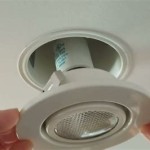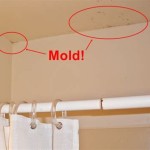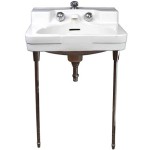How Much Does It Cost To Put a Fan In The Bathroom?
The installation of a bathroom fan represents a common home improvement project aimed at enhancing air quality, reducing moisture, and preventing mold growth. Understanding the cost involved in this process requires considering various factors, extending beyond the price of the fan itself. This article provides a detailed breakdown of the expenditures associated with bathroom fan installation, covering the fan's cost, labor expenses, and potential additional costs related to electrical work and ducting.
The primary benefit of a bathroom fan lies in its ability to vent moisture generated during showers and baths. Without adequate ventilation, this moisture can lead to the growth of mold and mildew, which can damage surfaces, trigger allergies, and negatively impact indoor air quality. A bathroom fan effectively removes this moisture, preventing these problems and contributing to a healthier living environment. Investing in a bathroom fan offers substantial long-term benefits by minimizing the risk of costly repairs related to water damage and mold remediation.
The cost of installing a bathroom fan can vary significantly based on several factors, including the type of fan selected, the complexity of the installation process, and the prevailing labor rates in the area. Older homes may require more extensive work due to outdated wiring or the absence of pre-existing ductwork. Newer homes, on the other hand, may have pre-installed ductwork and electrical wiring, simplifying the installation process and reducing the overall cost. Analyzing these variables is crucial for obtaining an accurate estimate of the total expense involved.
Fan Cost and Type
The price of a bathroom fan is highly dependent on its features, size, and quality. Basic models, often referred to as builder-grade fans, can range from $20 to $50. These fans typically offer adequate ventilation for small bathrooms but may be noisier and less efficient compared to higher-end models. Mid-range fans, which offer improved performance and quieter operation, generally cost between $50 and $150. These fans often feature higher CFM (cubic feet per minute) ratings, indicating their ability to remove more air per minute, making them suitable for larger bathrooms.
High-end bathroom fans, priced from $150 to $500 or more, often include advanced features such as built-in lighting, humidity sensors, and Bluetooth speakers. Some models also incorporate heat lamps, providing added warmth during colder months. These premium fans are designed for optimal performance, whisper-quiet operation, and enhanced energy efficiency. Furthermore, smart bathroom fans, controllable via smartphone apps or voice assistants, are becoming increasingly popular, adding a layer of convenience and customization.
When selecting a bathroom fan, it is crucial to consider the size of the bathroom. The Home Ventilating Institute (HVI) recommends a minimum of 1 CFM per square foot of bathroom space. For example, a 50-square-foot bathroom would require a fan with a CFM rating of at least 50. Bathrooms with high ceilings or frequent use may benefit from a fan with a higher CFM rating. In addition to CFM rating, the noise level of the fan, measured in sones, is an important consideration. Fans with a sone rating of 1.0 or less are considered very quiet, while those with a rating of 4.0 or more can be quite noisy.
Labor Costs and Installation Complexity
Labor costs represent a significant portion of the overall expense of installing a bathroom fan. The cost of labor can vary widely depending on the geographic location and the experience of the electrician or contractor performing the work. In general, labor costs can range from $150 to $500 or more, depending on the complexity of the installation. A straightforward replacement of an existing fan may cost less than installing a new fan in a bathroom that lacks pre-existing ductwork or electrical wiring.
One of the most significant factors influencing labor costs is the need for electrical work. If the bathroom does not already have an electrical circuit dedicated to the fan, an electrician will need to run new wiring from the electrical panel to the bathroom. This can involve cutting into walls, running wires through attics or crawl spaces, and installing a new circuit breaker. The cost of electrical work can range from $100 to $400 or more, depending on the distance between the electrical panel and the bathroom and the complexity of the wiring required.
The presence or absence of existing ductwork also plays a crucial role in determining labor costs. If the bathroom already has ductwork in place, the installation process is typically simpler and less time-consuming. However, if ductwork needs to be installed, the cost can increase significantly. The installation of ductwork may involve cutting holes in walls or ceilings, running ductwork through attics or crawl spaces, and connecting the ductwork to an exterior vent. The cost of ductwork installation can range from $100 to $300 or more, depending on the length of the ductwork and the complexity of the installation.
Permits may be required for bathroom fan installation, particularly if electrical work or ductwork is involved. The cost of permits can vary depending on the local building codes and regulations. Obtaining the necessary permits ensures that the installation complies with safety standards and building codes. Failure to obtain the required permits can result in fines and potential safety hazards. Checking with the local building department to determine the permitting requirements for bathroom fan installation is crucial.
Additional Costs and Considerations
Beyond the cost of the fan and labor, several additional costs may arise during the installation process. These costs can include materials such as ductwork, wiring, connectors, and mounting hardware. Depending on the scope of the project, additional materials may cost between $20 and $100 or more. It is also crucial to factor in the cost of any necessary repairs to walls or ceilings that may be damaged during the installation process. Patching holes, painting, and repairing drywall can add to the overall cost of the project.
Older homes may present unique challenges during bathroom fan installation. Asbestos abatement may be necessary if asbestos-containing materials are present in the ceilings or walls. Asbestos abatement can be a costly and time-consuming process, requiring specialized equipment and trained professionals. Similarly, lead paint remediation may be necessary if lead-based paint is present. Lead paint remediation also requires specialized equipment and trained professionals to ensure the safety of the occupants.
Proper disposal of the old bathroom fan is also essential. Some municipalities have specific regulations regarding the disposal of electronic waste. If the old fan contains hazardous materials, such as mercury-containing lamps, it may need to be disposed of at a designated recycling facility. The cost of disposing of the old fan can vary depending on the local regulations and the type of fan being disposed of.
The long-term cost savings associated with bathroom fan installation should also be considered. By preventing moisture buildup and reducing the risk of mold and mildew growth, a bathroom fan can save money on costly repairs and remediation in the future. Additionally, a bathroom fan can improve indoor air quality, reducing the risk of respiratory problems and allergies. The energy efficiency of the fan can also contribute to long-term cost savings by reducing energy consumption.
Choosing a qualified and experienced electrician or contractor is essential for ensuring a safe and effective bathroom fan installation. Checking references, reviews, and licensing information to verify the professional’s credentials is advisable. A reputable professional will provide a detailed estimate of the cost of the installation, including the cost of the fan, labor, materials, and permits. They will also be able to answer any questions and address any concerns about the project. Investing in a professional installation ensures that the fan is installed correctly and safely, maximizing its performance and lifespan.
In summary, the cost of putting a fan in the bathroom is multifaceted, encompassing the fan's price, labor expenditures, and potential supplementary expenses. Factors such as the fan's type, the installation's complexity, and supplementary requirements like electrical or ductwork modifications can collectively influence the final expense. A thorough assessment of these components is essential for precise budgeting and informed decision-making. By proactively addressing these considerations, homeowners can effectively manage both the immediate and long-term costs associated with this essential home improvement.

Average Cost To Install A Bathroom Fan Forbes Home

How Much Does It Cost To Install Bathroom Ventilation And Fans Badeloft

2024 Cost To Install Bathroom Fan Angi

How Much Does It Cost To Install Bathroom Fan

How Much Does It Cost To Install Bathroom Ventilation And Fans Badeloft

Bathroom Extractor Fan Costs Calculator Quotes For 2024

Cost To Install A Bathroom Fan Apartment Geeks

Bathroom Extractor Fan Installation Cost Guide How Much Is It

What Extractor Fan Do I Need For My Bathroom Blog World

Bathroom Extractor Fan Installation Cost Guide How Much Is It
Related Posts







